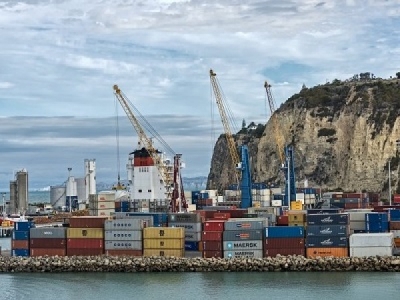
Posted on January 1, 2019
Westshore Beach struggles to hold onto its land, sand and people.
The seabed has sunk, so whenever a large swell makes its way into the usually sheltered waters of Hawke Bay, metres are torn from the land. So far more than 70m has gone in places.
Westshore resident and Napier City councillor Larry Dallimore says it was once the place to be in summer.
“This used to be a super popular beach,” Dallimore said. “Hundreds, sometimes thousands on the beach. Now on a good day, you’re lucky to see 20 people on the beach.”
Westshore is just around a headland from Napier’s CBD, a headland with Napier Port at its base.
Westshore’s sunken seabed became more apparent after the port was expanded in the 1970s. The shipping channel was deepened and dredged sand was dumped well away from Westshore.
But experts say that removal of sand is but a minor reason why Westshore Bay has sunk. The consensus is the 1931 earthquake is to blame.
Hawke’s Bay Regional Council asset manager Chris Dolley says the key event was the 1931 earthquake, which lifted the beach.
“That combined with other activities has lead to that seabed being eroded away over time.
“Also, through that earthquake, the Tutaekuri River was redirected away from the Ahuriri Estuary and stopped depositing silt and sand in the delta. And so the whole coastal processes were shifted at that point in time.
“There’s a whole bunch of experts with slightly different views, but the one thing they do agree on is the 1931 earthquake was a major event in creating this area going out of equilibrium, and it has been trying to find a new equilibrium ever since.”
But Dallimore doesn’t believe the earthquake is the main culprit. He says it is several decades worth of sand, destined for Westshore, being trapped by the port’s shipping channel.
Sand that used to arrive in the Westshore Bay on every swell.
“It’s a constant process according to the experts – 30,000 m³ enters the Bay every year, and leaves the Bay every year,” Dallimore said.
Every year, local councils reinforce the Westshore Beach bank with a wall of gravel. And nowadays, shipping channel dredgings are placed off Westshore, but Dallimore says it’s not enough to make up for Westshore’s prolonged starvation of coastal drift.
The upcoming Napier Port’s $142 million expansion involves dredging a deeper and wider shipping channel.
Dallimore says it is a golden opportunity to restore the seabed level, which would fix erosion problems. If enough suitable material was put into the tidal zone, it could future-proof the beach.
“The higher we raise the seabed, the flatter it is, and the further the waves are out.
“The further the waves are out, there is less chance of wave energy causing erosion and threatening the private properties.”
Resource consents for the port expansion were granted with no requirement to supplement Westshore. Nonetheless Napier Port and Napier City Council have agreed to continue the current practice of placing dredgings off Westshore – although only sand with less than 5 per cent silt will be deposited.
Napier Port’s general manager for infrastructure services Michel De Vos says the Hawke’s Bay Regional Council, Napier City Council, Westshore stakeholders and Dallimore should work together.
“Let’s go and do what we can to solve this problem,” he said. “Instead of looking in the past and perhaps too much blame game”.
Source: nzherald.co.nz





